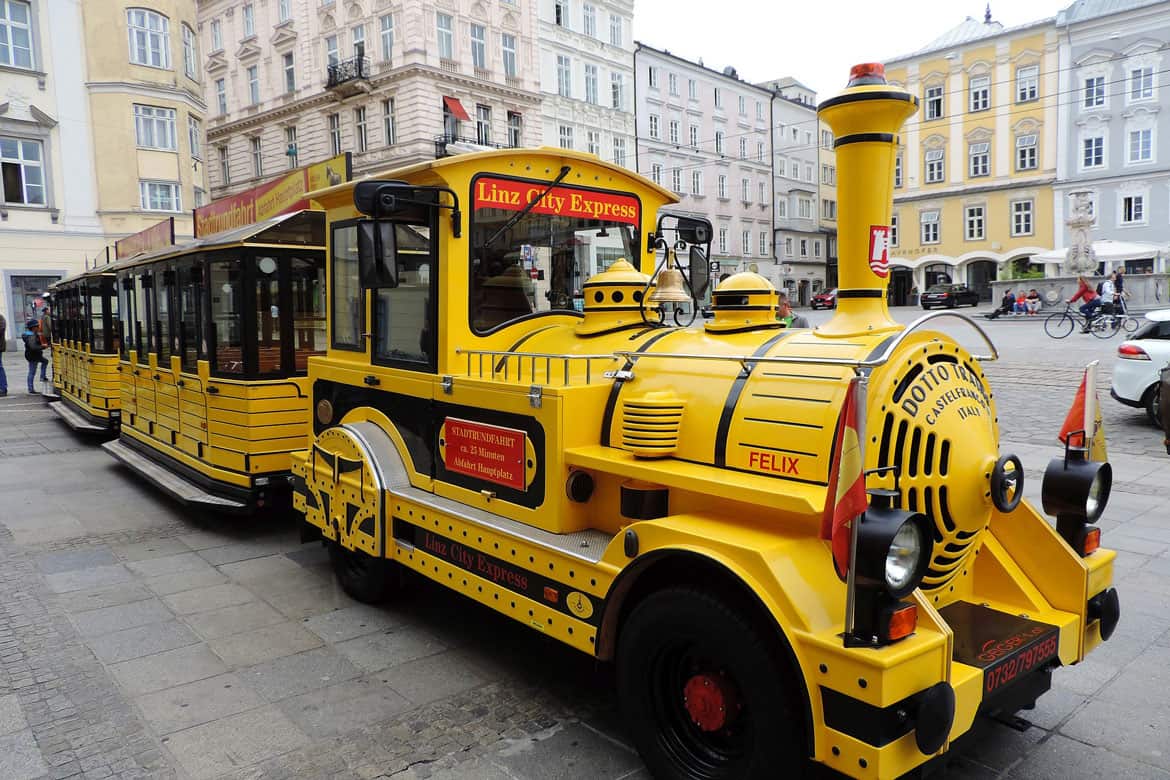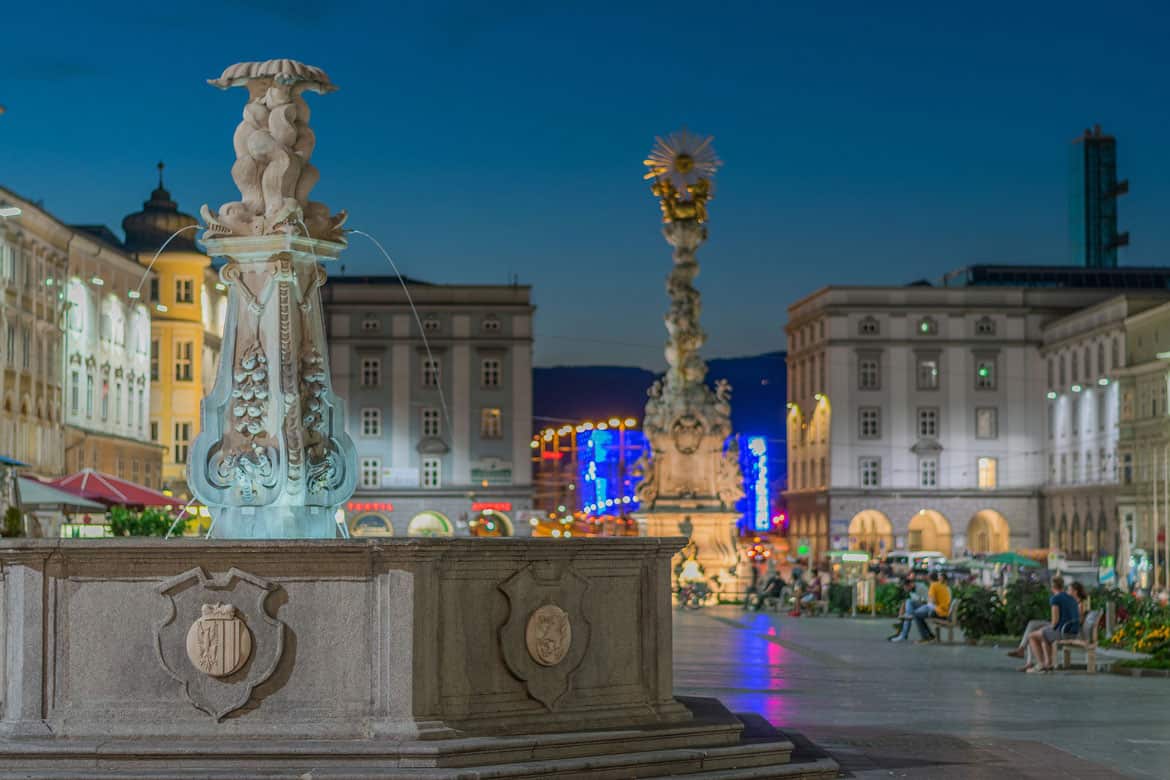Bernard O’Shea, who has always been a bit peculiar, goes out of his way for a peek at Anton Bruckner’s organ, and enjoys being a rare Luddite in Linz.
If you are a classical musical lover and you want to follow in the footsteps of Mozart, you go to stunning Salzburg and vivacious Vienna. If you are a big fan of Bruckner, you go to lousy Linz.
Oh well, Linz it is then.
Austria’s third-largest city has a reputation for being quite industrial, but thankfully, as it turns out, unless you are the kind of person who, upon arrival, jumps into a taxi and says “take me to the industrial sites”, you won’t notice. Located on a bend in the Danube river, surrounded by splendid green hills, it’s actually a pleasant place. But because it lies more or less halfway between the glamour cities of Salzburg to the west and Vienna to the east, it gets cast as a thorn between two roses.

Linz doesn’t fret about this. It’s not going to pretend it’s all dainty and elegant when it isn’t. Instead, it’s striving to be a hip, fun, happening place, a role it has settled comfortably into for a few years now, having been the European Capital of Culture in 2009 and taken it from there. It likes to portray itself as a city that captures the modern essence of progress and good living.
The local tourist office blurb puts it this way: Linz.change(d). Make this slogan the programme for your Linz adventure. The focus is not on a contemplative look back at ruins, castles, palaces or churches. Go on a journey of discovery with the question in mind of what characterises a successful city in our times. You’ll find many pointers …
That’s all very well, but I’m an old fuddy-duddy – I like taking a contemplative look back at historical sights. And it’s not as if Linz is lacking any. For one thing, it boasts the largest church in Austria – it can seat almost 20,000 people! – the Neo-Gothic Mariendom (also known as the New Cathedral). The stained glass windows are stunning and the guided tour of the 135 metre steeple tower is well worth doing for the city views – it’s in a secluded part of the city, a block back from the main shopping boulevard, the Landstrasse, and a good half-dozen blocks up from the river.
Another prime attraction is the hilltop Schlossmuseum (Castle Museum) and Old Town precinct, set in a prime location overlooking the Danube. Nearby is the Hauptplatz, one of the largest squares in Europe at 13,200 square metres; it is a great place to relax, have a meal or sample the famous Linzer torte (a pastry with a crumbly base, a jam filling and dough lattices on top) and watch the world go by.
A site well worth seeing, too, is the baroque pilgrimage basilica at Postlingberg, high on a hill on the opposite side of the river (take the tram up the mountain). The viewing platform here offers the best outlook over the city.
But what I particularly wanted to see were all the sights linked to my favourite composer, Anton Bruckner: notably the Brucknerhaus concert hall and the Church of St Ignatius (also known as the Old Cathedral), at the southern end of the Hauptplatz. Anton Bruckner was the organist here for 13 years, from 1856 to 1868, and the organ was adapted to his designs and is the only surviving instrument that he played. Every year a Bruckner festival is held at the Brucknerhaus, and one day I hope to take it in (alas, no Bruckner concerts were scheduled during my visit).
Bruckner was born in the nearby village of Ansfelden in 1824 and is buried under the great organ in the nearby St Florian’s Priory, where he spent his teenage years as a choirboy, and then as an adult worked as a teacher and organist. If you don’t know the music of Bruckner, start with Symphony No. 4. That was the one that got me hooked on Bruckner for life!
Although Bruckner is the composer most associated with Linz, but being a prominent Austrian city, it has hosted many a famous visitor. Beethoven was a regular visitor – he had a brother in the city – and Mozart himself wrote a Linz symphony (No. 36) and sonata during a stopover between his more regular haunts of Salzburg and Vienna.
But enough of Bernardo’s fuddy-duddy stuff: what about Linz’s modern side? The most obvious examples are the illuminated facades of the Lentos Kunstmuseum of modern art and the Ars Electronica Center, “a museum of the future with its interactive adventure world”. These two striking pieces of modern glassy architecture peer across at each other from different banks of the river, and add great splashes of colour to the Danube: the Ars Electronica, shaped a bit like a cargo ship with towers of containers at the stern, flicks between blue, green, rose and purple, while the Lentos when I was there was perpetually pink (but I’ve seen photographs of it in other colours).
Another recent edition, from 2013, is the Musiktheater Linz, Europe’s most modern opera house, located about three kilometres from the river, near the main railway station. And the highly rated Schlossmuseum has a modern new wing that was built for the city’s capital of culture year in 2009.
Linz has a buzz to it: you can feel it, and its calendar is packed with activities. In my short stay there, there were fun fairs and other activities on the waterfront, and I got the impression that the locals were very much enjoying life.
Lousy Linz? No way. Lively and likeable is far more like it. Maybe even lovable if you get to know it well. TTW
Bernard O’Shea stayed in Linz at his own expense, while travelling on a rail pass donated by Rail Europe as part of a prize. More information at www.linz.at. Photos © Bernard O’Shea, Markus Fischer and Alfred Stier.


